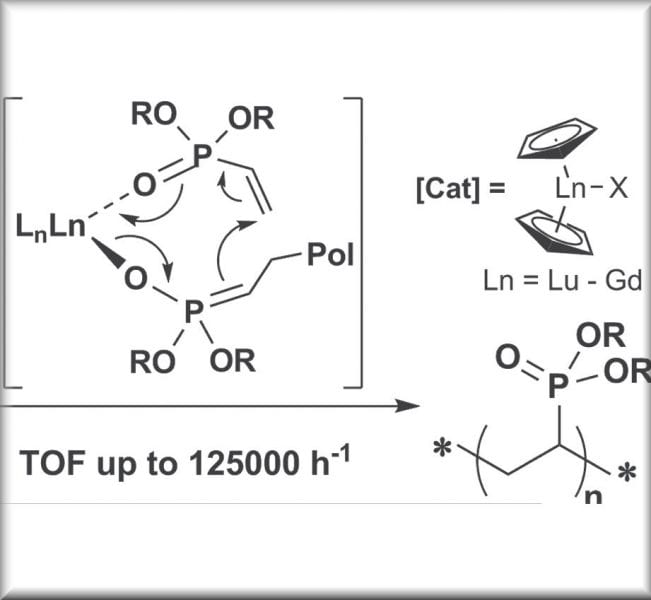 In the past few decades, the need for new materials with specifically designed and tailored properties has bee one of the major driving forces in polymer research. Polymers containing phosphonate moieties, particularly poly(vinylphosphonic acid) and its derivatives, have attracted great interest. However, the synthesis of well-defined poly(vinylphosphonate)s is hard to establish, as classical anionic and radical approaches provide only unsatisfying polymerization results.
In the past few decades, the need for new materials with specifically designed and tailored properties has bee one of the major driving forces in polymer research. Polymers containing phosphonate moieties, particularly poly(vinylphosphonic acid) and its derivatives, have attracted great interest. However, the synthesis of well-defined poly(vinylphosphonate)s is hard to establish, as classical anionic and radical approaches provide only unsatisfying polymerization results.
Rare earth metal-mediated group transfer polymerization (GTP) combines the suppression of side reactions, high activity and control of polymer tacticity with a living-type polymerization. This method can be applied to the polymerization of vinylphosphonates, yielding well-defined polymers with low polydispersity and precise molecular weight. In particular, late lanthanide metallocenes exhibit extremely high activity for vinylphosphonate polymerization. Via facile conversion by both mild hydrolysis or thermal treatment, rare earth metal-mediated GTP gives first access to well-defined high-molecular weight poly(vinylphosphonic acid).
Now, in new work, Bernhard Rieger and Stephan Salzinger (Technical University Munich) highlight the progress in this new field and show advantages of GTP in comparison to classical anionic and radical vinylphosphonate polymerizations. They provide insight into early stage catalyst optimization and present a new possibility for surface modification: surface-initiated group transfer polymerization (SI-GTP), a fast and efficient way to decorate surfaces with dense and homogeneous polymer brushes for the introduction of specific functionality, e.g. thermoresponsive and proton-conducting polymer coatings.

















